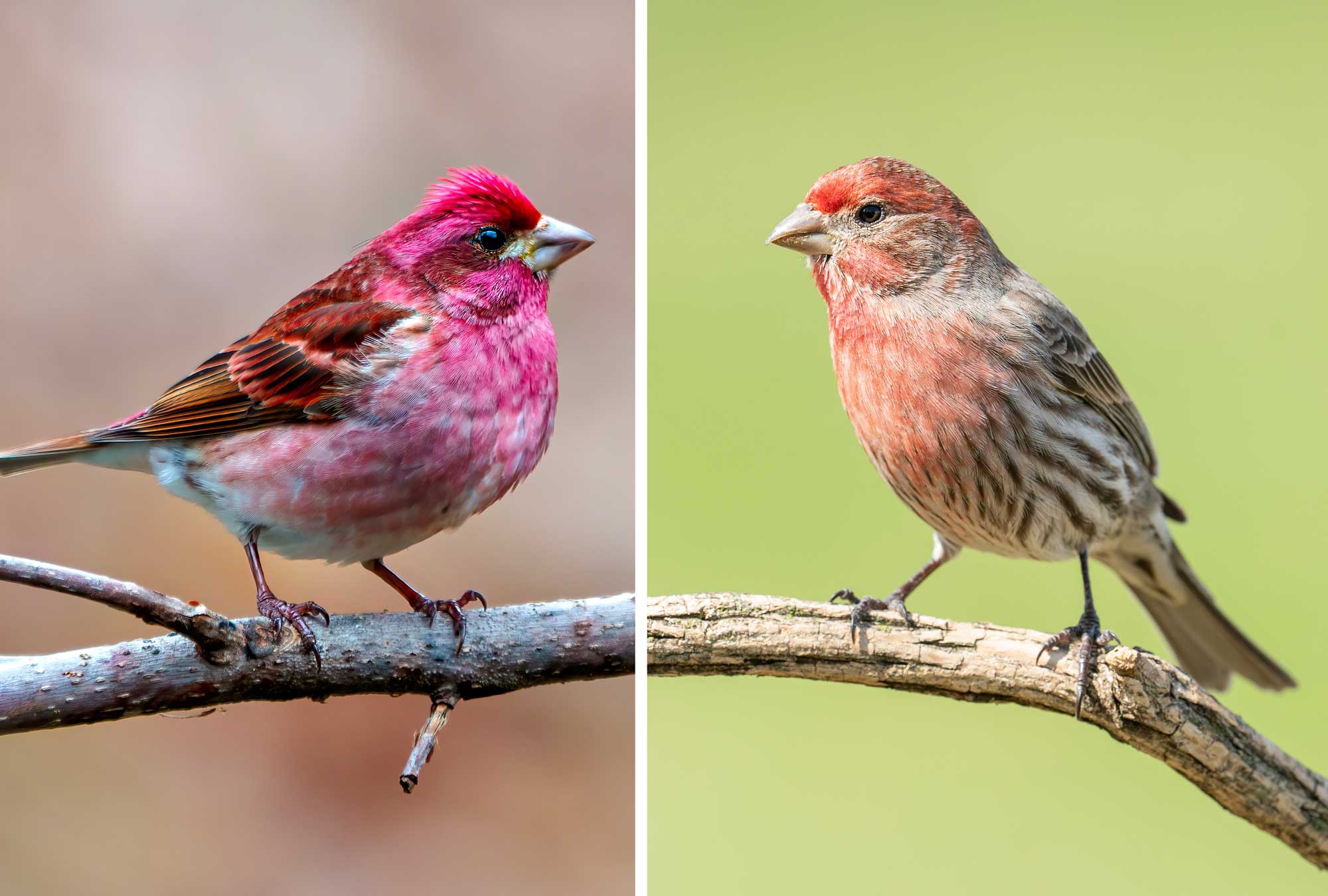What's the difference?: House finch vs. purple finch

Some small birds are easy to identify. Cardinals aren't often confused with another bird. And it's not hard to pick a blue jay out of a photo lineup of birds. But some of our most common finches can be difficult to distinguish from one another without a little know-how.
House finches and purple finches, in particular, can cause a lot of confusion because they do, in fact, look quite similar. There are some key ID features that will help you tell these birds apart, but the calendar is actually the best place to start. That's because house finches can be found here in northern Illinois year-round, but the purple finch is migratory and only spends winters in our area. Purple finches breed in the forests of Canada and then migrate to much of the eastern United States in the winter, according to the Cornell Lab of Ornithology.
In the warmer months of the year, the house finch is the only one of these two birds you will see in Will County. Beginning in late September or early October, purple finches will begin arriving here for the winter, making identification more difficult with both kinds of finches in the area. In the colder months, looking at their physical features can help you tell the house finches and purple finches apart.
Color is one of the most noticeable features of any bird, and the similarity in color between both the male and female house finches and purple finches is the basis of much of the confusion between these two species. The males of both species are reddish or purplish in color, while the females are more dull and drab, which is typical of many songbirds.
While coloration can be similar between the two species, there are some subtle differences. Among males, purple finches are cranberry or raspberry colored, while house finches appear more reddish or orangish, according to Birds & Blooms. The color on house finches also tends to be more concentrated on their head and breast, while the deep red color is more widespread on purple finches.
Females are more difficult to distinguish based on color alone, with both species being predominantly brown. The best way to distinguish between the two is to zero in on their faces. Purple finches have more bold markings, with two white stripes reaching from the tops of their beaks to the napes of their necks, Birds & Blooms reports. Their breasts are also more streaked, while the house finches have more dull coloring.
Both birds have similar-looking beaks, and their beaks provide a clue to another similarity between them: their diets. Both are primarily seed eaters, and they use their conical bills to help crack into seeds. House finches almost exclusively eat plant matter, but they will look beyond seeds. They also eat fruit and buds. Purple finches prefer seeds as well but will also eat buds, berries and other fruit, nectar and even some insects.
Want to attract these birds to your yard so you can practice telling them apart? Both will visit bird feeders, so stock your feeders with black oil sunflower seed in the winter to better your odds of seeing house finches and purple finches — and many other backyard birds.
One final thing to consider when trying to determine if the bird you are seeing is a house finch or purple finch is location. Habitat can be a clue, but not necessarily so. House finches like to stick close to humans, inhabiting the spaces close to our homes and buildings, be it in urban or rural areas, the Cornell Lab reports. Purple finches, on the other hand, stick to evergreen forests in the summer, but in the winter they are found in varying types of habitat, including fields and even the backyards where we see house finches.
A third finch species called the Cassin's finch can add to the ID confusion, but not here in Illinois. That's because although Cassin's finches look similar to house finches and purple finches, they have a much smaller range that does not include any part of the eastern United States. These birds are found in the mountains of the American West, the Cornell Lab of Ornithology reports.
